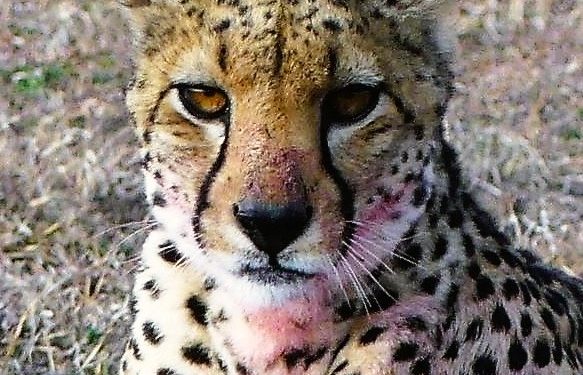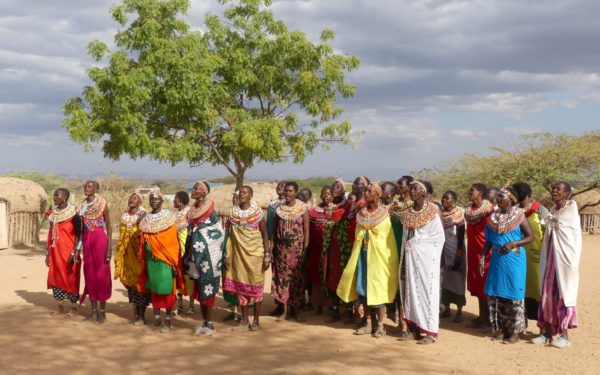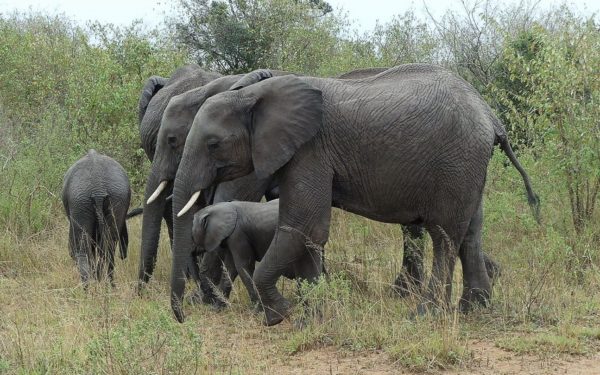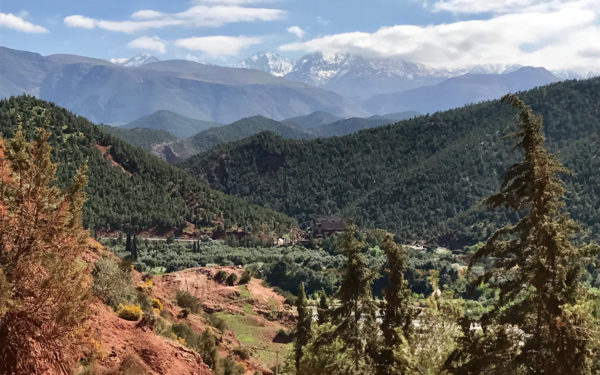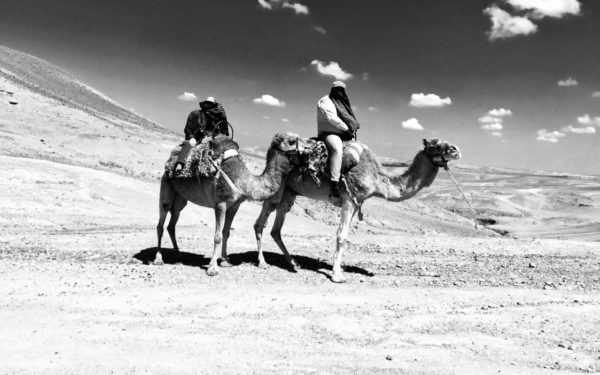He who climbs upon the highest mountains laughs at all tragedies, real or imaginary.” Friedrich Nietzsche
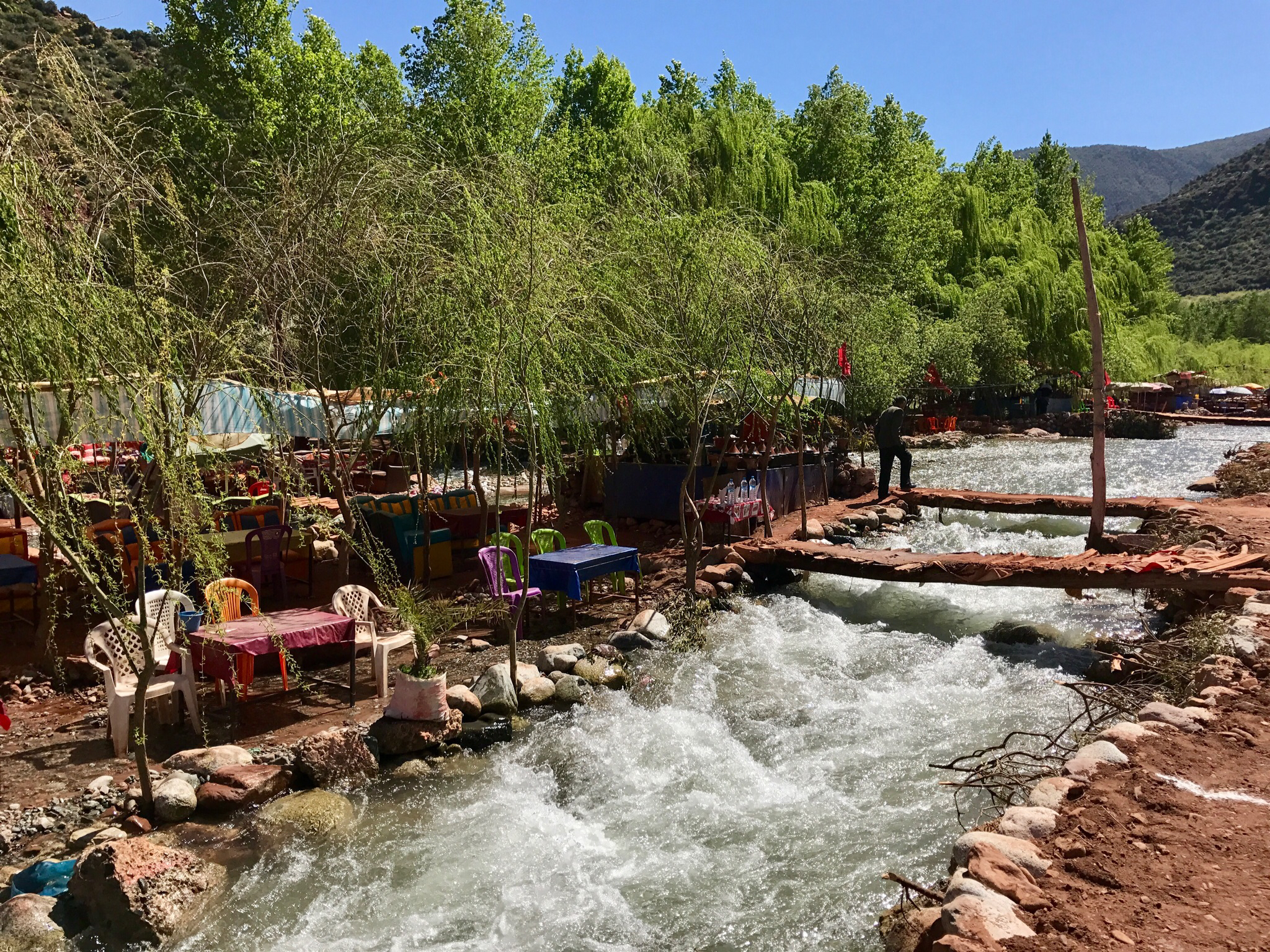
Mar 14, 2017
The Atlas Mountains stretch around 1,600 miles through Algeria, Morocco, and Tunisia. The range’s highest peak is Jebel Toubkal, with an elevation of 13,671 feet in southwestern Morocco. It separates the Mediterranean and Atlantic coastlines from the Sahara Desert. The Atlas mountains are primarily inhabited by Berber populations.
The mountains are home to a number of plant and animal species unique in Africa, many of them are endangered and some have already gone extinct.
Berbers or Amazighs, are an ethnic group indigenous to North Africa. They are distributed in an area stretching from the Atlantic Ocean to the Siwa Oasis in Egypt, and from the Mediterranean Sea to the Niger River.
Historically, they spoke Berber languages, since the Muslim conquest of North Africa in the seventh century, a large number of Berbers have acquired different degrees of knowledge of varieties of the languages of North Africa. After the colonization of North Africa Foreign languages, mainly French and to some degree Spanish, inherited from former European colonial powers, are used by most educated Berbers.
The majority of Berbers are predominantly Sunni Muslims. The Berber identity is usually wider than language and ethnicity and encompasses the entire history and geography of North Africa. Berbers are not an entirely homogeneous ethnicity and they encompass a range of phenotypes, societies, and ancestries.
There are some twenty-five to thirty million Berber speakers in North Africa The majority of North Africa’s population is believed to be Berber in origin, although due to Arabization most ethnic Berbers identify as Arabized Berbers.
Berbers call themselves some variant of the word i-Mazigh-en possibly meaning “free people” or “noble men”.
Today adventure takes into the Ourika Valley and to the Berber village of Tafza about an hour drive southeast from Marrakech, at the foot of the Atlas mountain, snowcap peaks could be seen in the distance.
We visited the village Berber museum, reached only after a hike of the main road through the village, quickly we became the Pied Piper as children’s followed as we made our way to what used to be the chief house. Berber villages are now governed by selected community members.
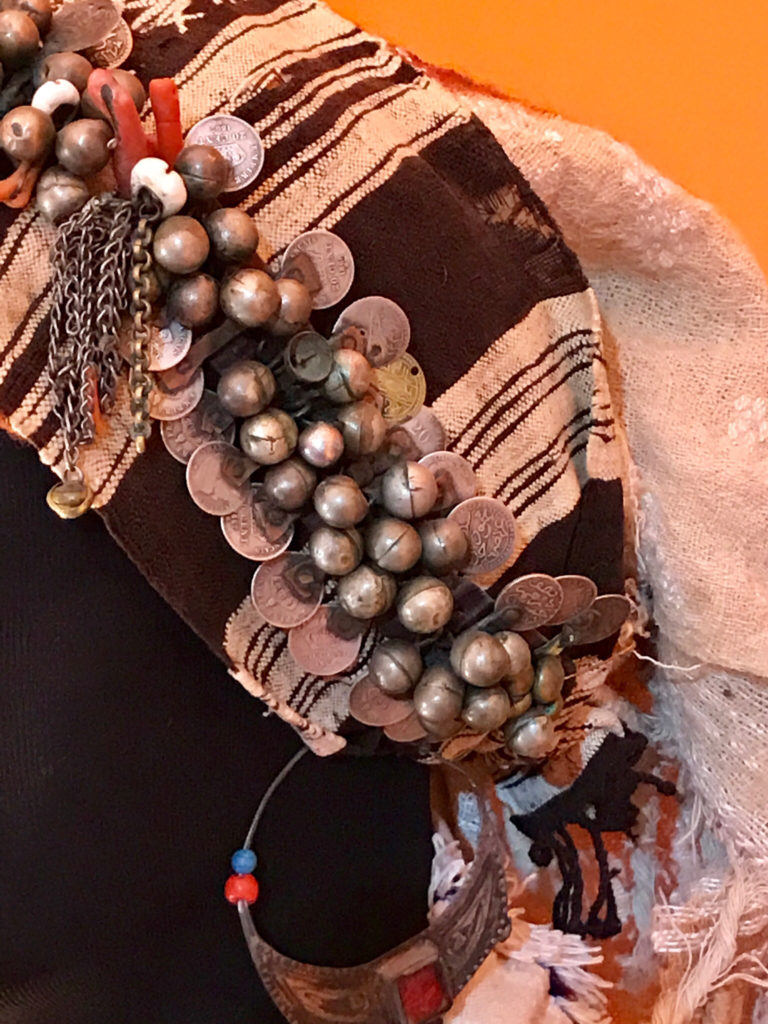
The chief house is adobe in the foundation, with small doors and rooms. the docent gave us very detailed information on the making and symbols of Berber carpets. Who knew that carpets can be male or female.
The fact an adobe brick is 35 dinars a cement brick 10 dinars. Although adobe is a Berber choice of ecological building supply with greater climate control, due to the cost most newly built villages house uses cement brick.
We continue with agriculture tools, musical instruments. They use scissors with concave blades to duplicate clapping…..found this fascinating. One room contained costumes and jewels that were mostly used for special occasions There was a mock-up of a traditional Berber room and a selection of prints depicting daily life.
We climbed to the roof top for an incredible view of the valley.
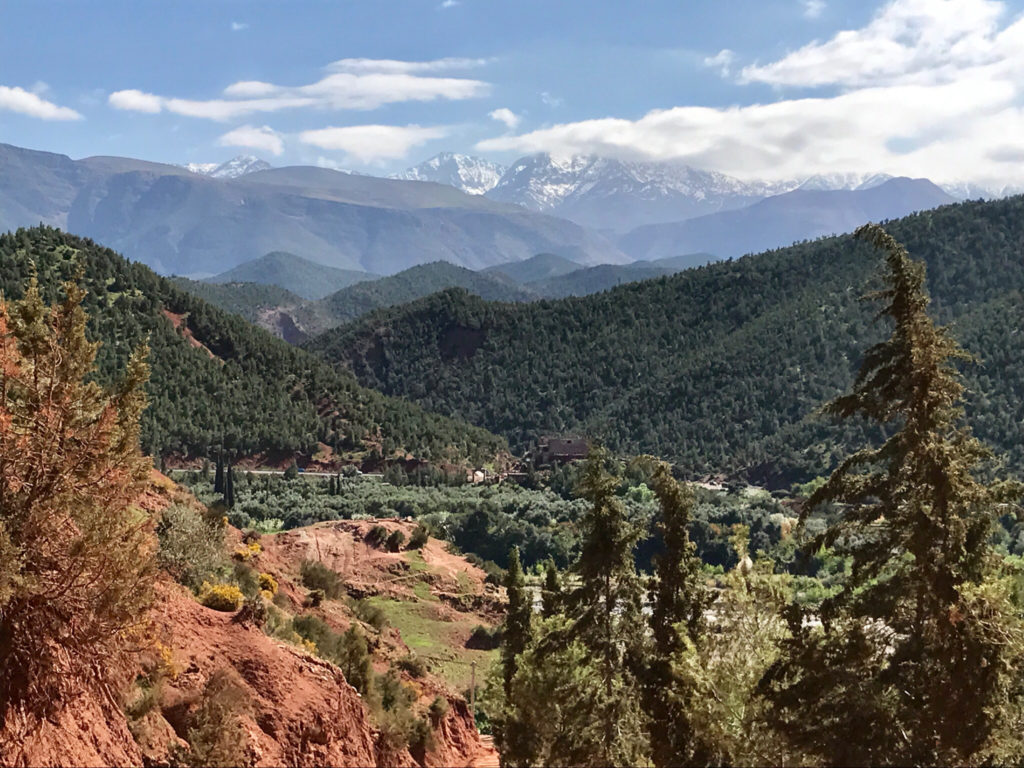
Our next stop was my favorite part of the day. We stopped at a local Berber house for a visit there were a few other tourists walking through the house at the time and David turn and said to me are we at an open house?
Once the other people left we were invited to seat n their living room for an elaborate mint tea demonstration, you just don’t pour hot water Into a cup with a teabag…….
The tea is first put in the teapot and a small quantity of boiling water is added. The tea is left to infuse for approximately 20–30 seconds. This initial liquid is poured out and kept aside. This is the “spirit” of the tea and will be added back after the tea is washed, to restore the “spirit” (the “spirit” of the tea is essentially a strong, deeply flavored liquid from the initial infusion, which adds extra flavor to the final infusion).
The tea is then “cleaned” by adding a small quantity of boiling water; which is poured out after one minute (to lessen the bitterness). This process may be repeated more than once. Mint and sugar are added (amounts vary; approximately five teaspoons of sugar for one teaspoon of tea leaves is typical), and water at the boiling point is then poured into the pot.
The pot may then be taken to heat and further boiled to increase the flavor of the infusion. After three to five minutes, a glass is served and poured back into the pot two to three times to mix the tea. Tea is then tasted (sugar if needed may be added) until the infusion is fully developed.
Traditionally, the tea is served three times. The amount of time it has been steeping gives each of the glasses of tea a unique flavor, described in this famous Maghrebi proverb: The first glass is as gentle as life, the second is as strong as love, the third is as bitter as death.
One word of caution they drink their tea beyond sweet. It’s custom to always have a large number of tea glasses on the tray than the guest present.
We were offered, fresh bread with, rancid butter, honey, and olive oil. The butter and honey together was an explosion of saltiness and sweetness in your palate, the olive could have been sip like a fine aged scotch.
We were guest so I used moderation, when truly I wanted to make a pig of myself .
Next stop the end of the road, you could not go any further, but we found riverside cafes(if you bring your food they will grill it for you or you can buy it) with tables, chairs, and sofas grouped on the little island in the middle of the river…. a favorite locale to hang out during the spring and summer months with the family.
Our lunch was to take place at the Kasbah Bab Ourika a total eco-friendly hotel only reached by 4x 4′ through narrow roads and villages, once reached the place was an oasis with views to all directions. This is a place of total disconnect from the modern world, deafening silence only broken by a car alarm blaring down in the village. Lots of hiking trails and the scenery reminds you of the American southwest, scraggy cliffs of red rocks.
Our lunch consisted of a delicious very well-sourced Nicose’ Salad for David, myself a cup of tomato gazpacho, and fish cakes with roasted beets and avocado butter…… odd but trust me extremely tasty.
Our 4 x4 driver was nowhere to be found so I dialed our guide (mobile provided), he informed us that our driver was on his way – so we decided to take a walk after lunch and basically met him halfway into town. The walk was most enjoyable as again we walked through villages as we peered their daily lives(sadly no pictures). A friendly smile from everyone we encountered.
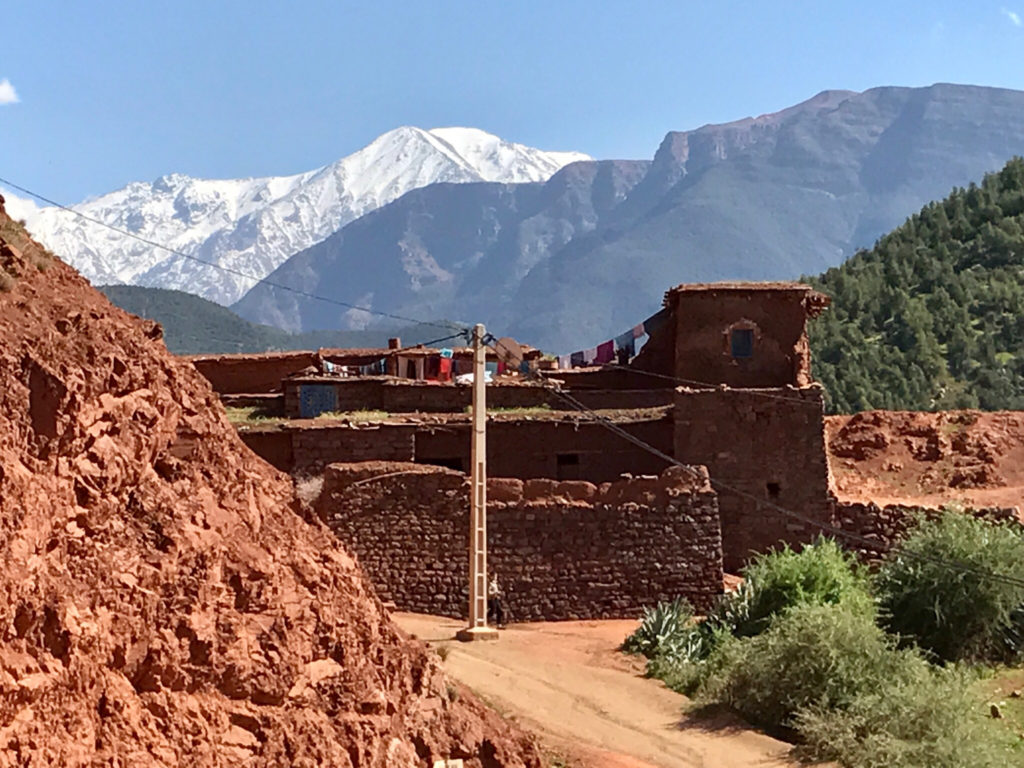
We returned back to Marrakech for a little nap then a pre-sunset walk through the souks and the Main Square. Not enjoying shopping, maybe I will pick up a few items at the airport.
No dinner tonight…………still very satisfied from lunch, plus we have a basket of fresh fruit if hunger pangs hit us.
Tomorrow David rides a camel, this one should be one for the books.
